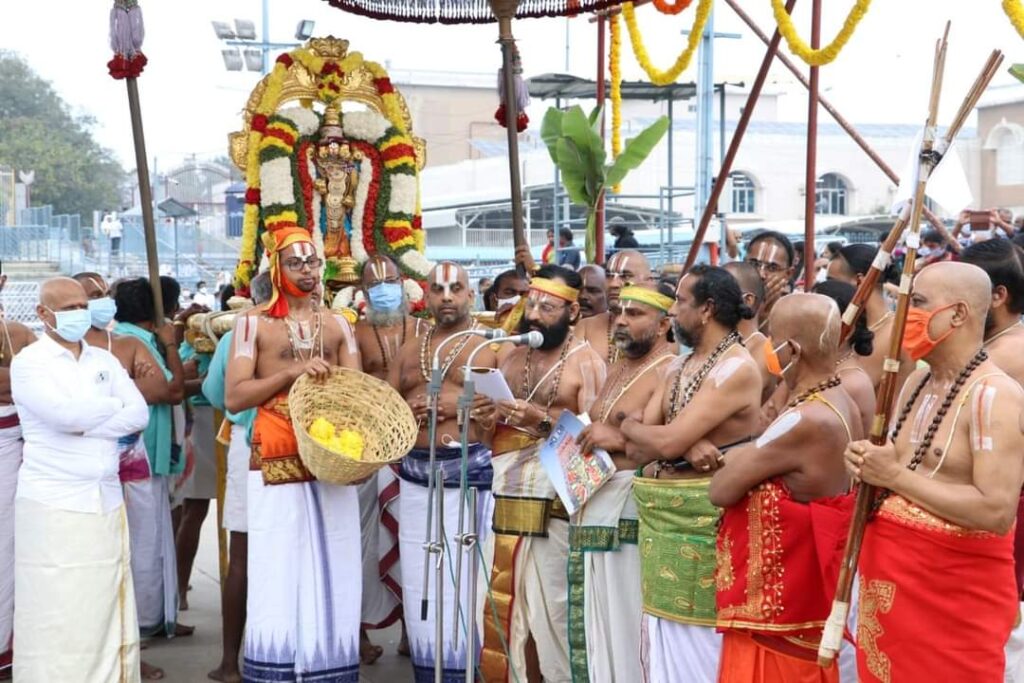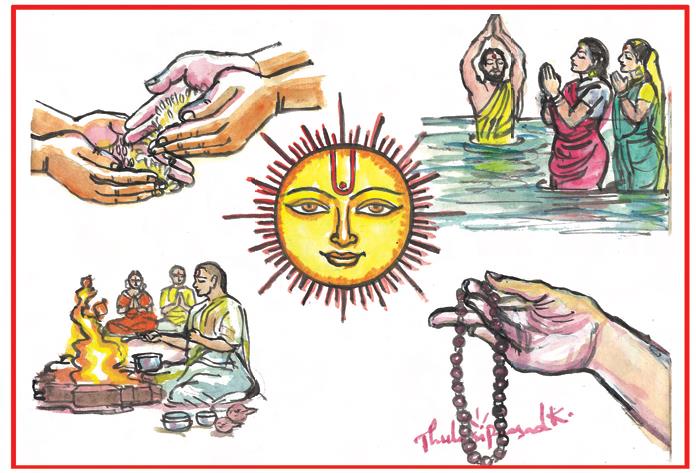During the auspicious Pushya Masam, some of the important festivals at Tirumala are Pranayakalaha Mahotsavam, Parveta Utsavam, Swami Pushkarini theertha Mukkoti and Kakapudi Utsavam. Every Utsavam or Ritual at Tirumala Hill Shrine has its own story or itihyam related to Lord Srinivasa. Pranayakalaha Mahotsavam / Pranayakalahotsavam Among the series of festivals that are performed with Read More
Tag: Pushyamasam
According to the Hindu Lunar Calendar, when the moon is at or near the constellation of the star Pushyami, that month is known as ‘PushyaMasam’.
Significance of Pushyamasam
Pushyamasam In the auspicious constitution of the Hindu calendar, Pushyamasam stands as a jewel, radiating its propitious glow between December and January. It is a time when traditions come alive and the spirit of devotion dances hand in hand with the changing seasons. As we delve deep into the heart of Pushyamasam, let us explore Read More


